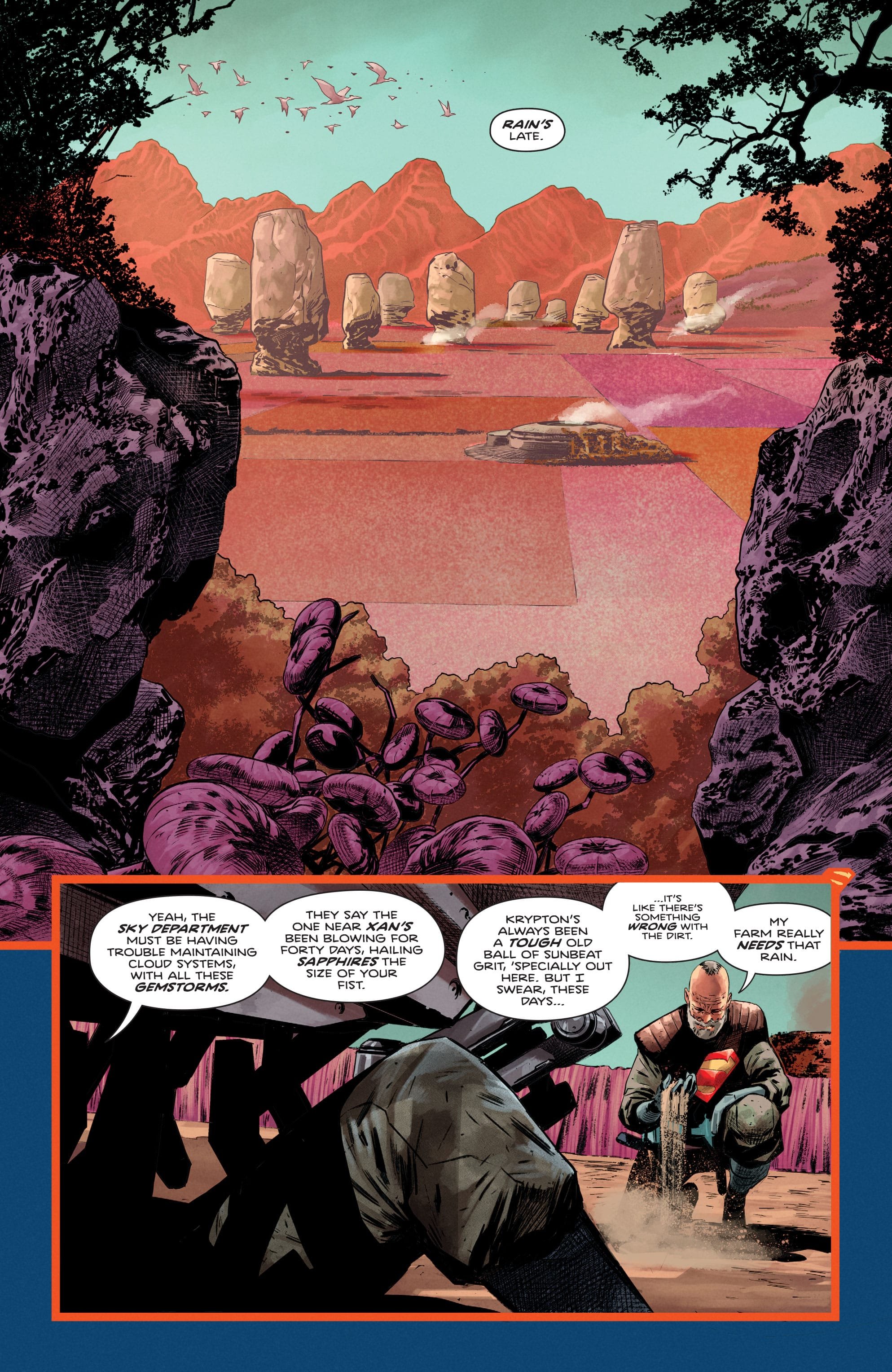Absolute Superman #1 [Review]
The latest installment in DC’s “Absolute” line, Absolute Superman #1, arrives as a compelling reimagining of the Man of Steel, courtesy of an all-star creative team. Helmed by writer Jason Aaron, with art by Rafa Sandoval and colors by Ulises Arreola, this comic completes the powerhouse trilogy of DC's “Absolute” series. Following Scott Snyder’s gritty Absolute Batman and Kelly Thompson’s mythic Absolute Wonder Woman, Aaron’s Absolute Superman tackles both the hero’s mythos and the world around him with a renewed vigor that resonates with our times. This reimagined Superman goes beyond mere superhuman strength; he becomes a symbol of resilience amid societal and environmental upheavals.
Jason Aaron’s storytelling delves deeply into the world of Krypton, presenting a society at once utopian and fractured. Here, we’re introduced to an elite, science-driven civilization facing societal rifts. The ruling class holds tight control, portraying a cold rationality that favors intellect and hierarchy over compassion. Aaron’s focus on world-building shines as he layers Kryptonian society with hierarchies and tensions that mirror real-world divides. We see a civilization that has mastered technology but struggles with its own rigidity—a structure that seems designed to fail from within. It’s here that Aaron subtly critiques real-world issues, using Krypton as a microcosm to explore themes of environmental strain and unchecked ambition. The narrative may feel overtly didactic at times, but that directness gives readers a clear window into Aaron’s underlying message: the only way forward is through transformative change.
One of the most striking aspects of this debut is how Aaron’s Superman grapples with his heritage. The traditional Superman values of compassion, justice, and sacrifice remain intact, yet they’re recast in a light that feels increasingly relevant. Instead of simply being a force for good, Aaron’s Superman emerges as a product of two “revolutionary” figures, steeped in the act of questioning the traditions and hierarchies that he was ultimately born into. This Superman isn’t just about heroism; he’s about progress and pushing boundaries, which makes his journey feel both timeless, fresh, and relevant. The portrayal is emotionally charged, resonating with readers who may feel similarly disillusioned by stagnant institutions and yearning for leaders who dare to challenge the status quo.
Complementing Aaron’s storytelling is Rafa Sandoval’s stunning artwork, which brings Krypton to life with a captivating blend of futuristic and organic elements. Krypton’s landscape, with its sharp geometrical towers offset by lush natural surroundings, embodies the clash between artificial progression and the pull of the natural world. Sandoval’s attention to detail in rendering Kryptonian architecture is extraordinary; the buildings exude a cold elegance that contrasts with the untamed nature surrounding them, visually encapsulating the ongoing struggle between science and nature that Aaron’s story explores.
Sandoval’s character designs further enrich this narrative, revealing emotional depths in each panel. His portrayal of the Kryptonian elite is particularly effective: their stern, almost detached expressions reflect a deep-seated arrogance and entitlement, while the protagonist’s intense physicality hints at a hero on the verge of breaking free from these constraints. Sandoval’s action sequences are beautifully rendered, with dynamic angles and lighting that make the scenes feel immersive and alive. The use of light and shadow, especially during intense moments, adds layers of intensity, with bright energy blasts and deep shadows enhancing the story’s emotional stakes.
Colorist Ulises Arreola plays a crucial role in making these visuals pop, using a color palette that shifts between stark, metallic tones for Krypton’s technological marvels and warmer, more organic hues for the natural world. This interplay of colors underscores the thematic tension between Krypton’s rigid societal structure and the raw power of nature. Arreola’s use of color also mirrors the protagonist’s own internal conflict—vivid shades emphasize moments of hope and defiance, while cooler tones accompany scenes of societal repression. It’s a brilliant visual cue that underscores Aaron’s writing without overpowering it.
What makes Absolute Superman #1 resonate, though, is the sense of timeliness it carries. In an era where justice often feels out of reach and institutions seem stagnant, Aaron’s Superman reintroduces the hero as a beacon of hope and resistance. He’s no longer just a figure of strength; he’s a symbol of progress, a leader willing to confront tradition and challenge the status quo. This Superman isn’t content with merely protecting; he’s invested in transforming, an approach that feels perfectly suited to a world grappling with its own disillusionments and fears.
Absolute Superman #1 is a potent reminder of the power of comic book storytelling, merging action with introspection, spectacle with substance. For longtime Superman fans and newcomers alike, this comic is more than just another origin story; it’s a thoughtful exploration of what it means to be a hero in a complex world. Aaron and his team have crafted a Superman that feels revitalized, a character who embodies both resilience and change, making this comic a must-read for anyone looking to rediscover the enduring relevance of the Man of Steel.



